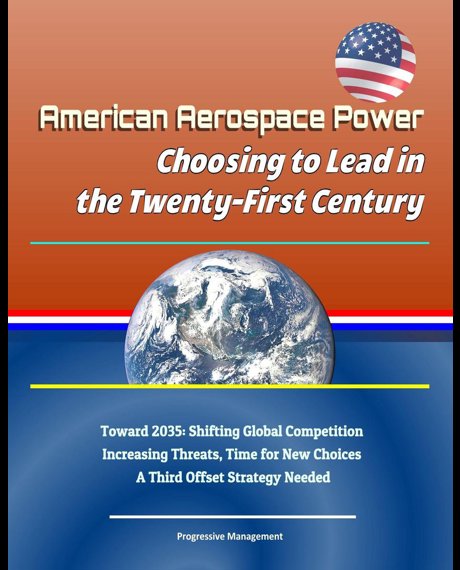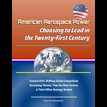American Aerospace Power: Choosing to Lead in the Twenty-First Century - Toward 2035: Shifting Global Competition, Increasing Threats, Time for New Choices, A Third Offset Strategy Needed
American Aerospace Power: Choosing to Lead in the Twenty-First Century - Toward 2035: Shifting Global Competition, Increasing Threats, Time for New Choices, A Third Offset Strategy Needed
€ 3,68
This excellent report has been professionally converted for accurate flowing-text e-book format reproduction. Rarely does a work of military strategy elevate its vision beyond merely military concerns. Rarer still are strategies that compel the wise engagement of our military with the broader polity they serve—the American people. The strategy you are about to read is this rare exception. American Aerospace Power: Choosing to Lead in the Twenty-First Century offers a compelling vision for sustaining the American way of life for the next hundred years. As challenges to world order and the American way of life appear around every corner, our instinct might be to ask, "What do we do now?" Wiser strategists, however, ask where have we been? Where have we historically gained our strength, preserved our advantage, and developed one of the most prosperous societies in the history of the world? This essay looks forward by first looking back, and it finds that America's strengths as an aerospace nation laid the foundation for our unmatched prosperity over the past 100 years.
This is a story of civil-military partnerships at their finest, harnessing the innovation of industry, the insight of academia, the strength of the military, and the sweat equity of the American worker. Together, this aerospace nation propelled Charles Lindbergh across the Atlantic in 1927, rocketed Chuck Yeager through the sound barrier in 1947, landed Neil Armstrong on the moon in 1969, and hung the constellation of satellites that give communication, timing, and navigation to the entire world. As the authors make clear, American aerospace strength has been the fruit of toil matched with vision, not a birthright. The challenge for a new century is to reclaim our aerospace roots as a nation. As the pace of technological change accelerates, and with it the potential threats to our American way of life, our aerospace power may prove to be the margin of our survival. The strategy outlined in this essay appeals not to a military audience, but to the American people; the task ahead of us is a national task, not just a military one. Our approach needs to be comprehensive once again, uniting our societal strengths in industry, technology, manufacturing, and innovation. American Aerospace Power gives us a path forward, equally grand in its scope and detailed in its recommendations.
This excellent report has been professionally converted for accurate flowing-text e-book format reproduction. Rarely does a work of military strategy elevate its vision beyond merely military concerns. Rarer still are strategies that compel the wise engagement of our military with the broader polity they serve—the American people. The strategy you are about to read is this rare exception. American Aerospace Power: Choosing to Lead in the Twenty-First Century offers a compelling vision for sustaining the American way of life for the next hundred years. As challenges to world order and the American way of life appear around every corner, our instinct might be to ask, "What do we do now?" Wiser strategists, however, ask where have we been? Where have we historically gained our strength, preserved our advantage, and developed one of the most prosperous societies in the history of the world? This essay looks forward by first looking back, and it finds that America's strengths as an aerospace nation laid the foundation for our unmatched prosperity over the past 100 years.
This is a story of civil-military partnerships at their finest, harnessing the innovation of industry, the insight of academia, the strength of the military, and the sweat equity of the American worker. Together, this aerospace nation propelled Charles Lindbergh across the Atlantic in 1927, rocketed Chuck Yeager through the sound barrier in 1947, landed Neil Armstrong on the moon in 1969, and hung the constellation of satellites that give communication, timing, and navigation to the entire world. As the authors make clear, American aerospace strength has been the fruit of toil matched with vision, not a birthright. The challenge for a new century is to reclaim our aerospace roots as a nation. As the pace of technological change accelerates, and with it the potential threats to our American way of life, our aerospace power may prove to be the margin of our survival. The strategy outlined in this essay appeals not to a military audience, but to the American people; the task ahead of us is a national task, not just a military one. Our approach needs to be comprehensive once again, uniting our societal strengths in industry, technology, manufacturing, and innovation. American Aerospace Power gives us a path forward, equally grand in its scope and detailed in its recommendations.
| Prijs | Verzendkosten | Totaal | |
|---|---|---|---|
€ 3,68 | € 0,00 | € 3,68 |
Alternatieve producten
© 2016 - 2024 aanbiedingchecker

